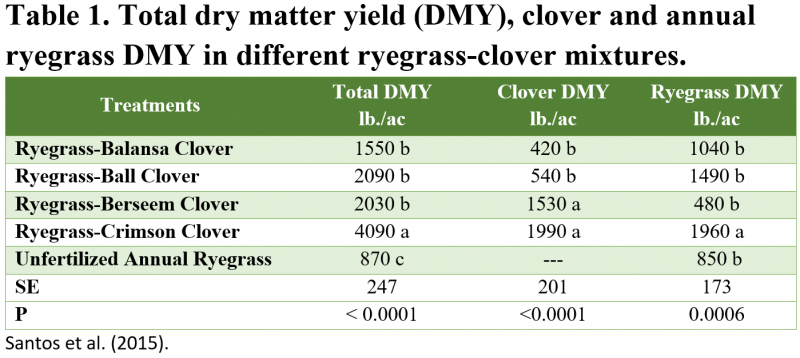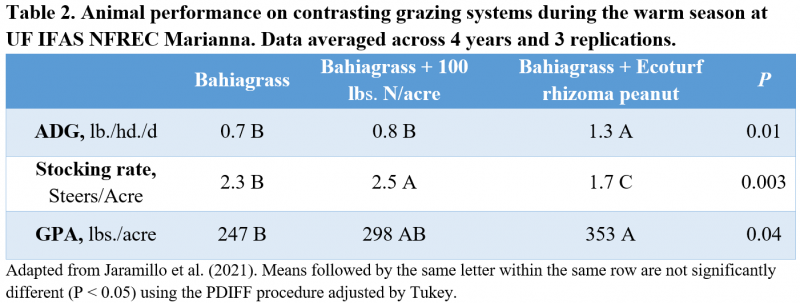Jose Dubeux, L. Queiroz, J. Pereira Neto, D. Loures, Liza Garcia, and M. Ruiz-Moreno, UF/IFAS North Florida Research and Education Center, Marianna
Nitrogen (N) oftentimes is the most limiting nutrient for plant growth. Applying nitrogen fertilizer is a common practice to add this key nutrient to forage systems. Nitrogen fertilizer costs, however, have increased dramatically (Figure 1), and will likely continue to be expensive in the years to come. Urea, a common N fertilizer, sold in December 2020 for $361/ton, but now costs around $887 per ton, an all-time high. This represents an increase of 145% in one year. A possible alternative to replace N fertilizer is introducing forage legumes into pastures. Legumes associate with soil microbes and reduce atmospheric N2 to available forms to plants. Although 78% of the atmosphere is made up of N2 gas, this form is not available to plants. It must be reduced to allow plant utilization. Industrial fertilizer is reduced using the energy from natural gas, a non-renewable source of energy, to break down the triple bond and make it available for plants. Soil bacteria do a similar job when associating with forage legumes.
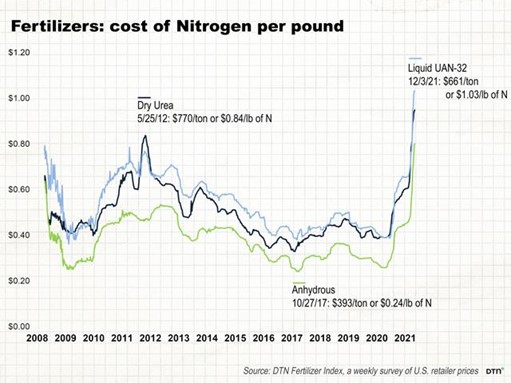
Figure 1. Cost of N fertilizer from 2008 to 2021. Source: High Fertilizer Prices: The History and Future
–
How much nitrogen can legumes add to grazing systems?
The amount of N fixed by the association of legumes and soil bacteria depends on several factors, including legume species, proportion of legume in the pasture, and all factors affecting legume growth such as rainfall, temperature, nutrients, pH, light, and management practices. In a grass-legume mixture, we should try to have at least 30% of legumes in the botanical composition to have a significant contribution. Our results in Marianna indicate that annual clovers can add approximately 50 lbs. N/acre per year (Santos et al., 2015) and summer legumes such as rhizoma peanut might add an additional 50 lbs. N/acre annually. These amounts depend on the factors mentioned above, with legume proportion being one of the key factors (Figure 2). Timing of N availability might be an issue during the early season, so an application of some N fertilizer as a starter would be helpful to get the system going and to develop both the grass and legume seedlings in the early stages of growth during the cool season.
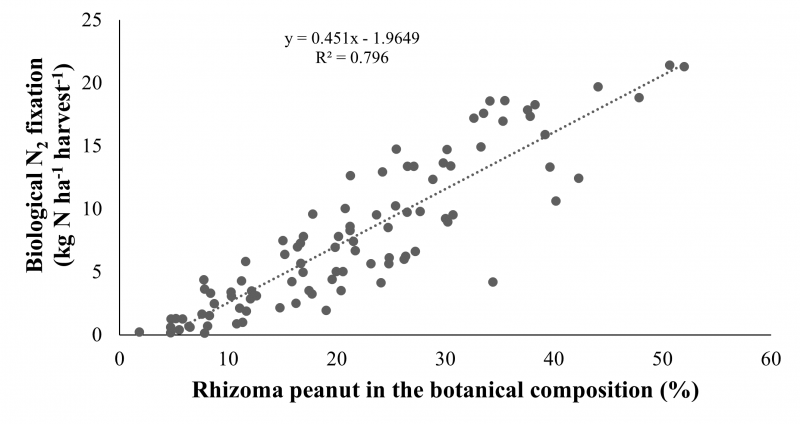
Figure 2. Relationship between proportion of rhizoma peanut in the botanical composition and biological N2 fixation by rhizoma perennial peanut. L.D. Queiroz (2021).
–
Is the legume N available for the companion grass?
A common question among producers is whether the legume N is shared with companion species, such as bahiagrass or bermudagrass. This is an important point! In grazing systems, cattle graze the legumes and return the nitrogen via feces and urine. Most of the N (80-90%) is recycled, with a limited amount retained in the body of the animal. If the legume is not grazed, the N will return via litter. In both cases, the companion grass will be able to utilize the N. In hay systems, the transfer is not as efficient because of the absence of grazing animals. There are other pathways where N can be transferred from the legume to the companion grass, and that include the mycorrhizae network below-ground and root and rhizome turnover. In a study conducted in Marianna, we compared annual ryegrass growing without N fertilizer to blends with forage legumes (Figure 3).
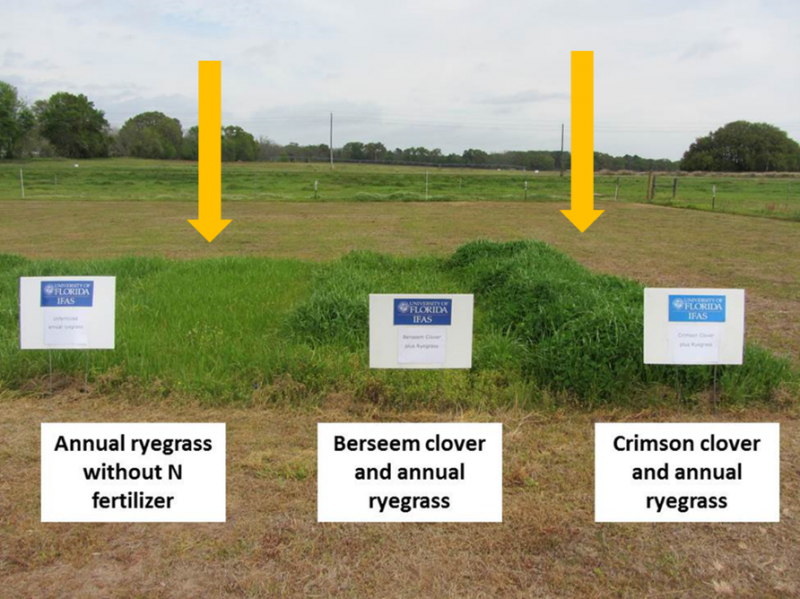
Figure 3. Annual ryegrass without N fertilizer or mixed with annual legumes at UF IFAS NFREC Marianna. Credit: Jose Dubeux, UF/IFAS
–
Mixing annual ryegrass with forage legumes increased up to five folds the dry matter accumulation. The best combination was annual ryegrass and crimson clover, and the annual ryegrass in the mixture grew more than twice as when in a monoculture (Table 1).
In another study at UF IFAS NFREC Marianna, we did a N balance in contrasting grazing systems, including N additions from fertilizers and biological N2 fixation, and the N recycled via dung and urine. Overall, grass-legume systems recycled the N more efficiently, with approximately 80% of the added N returning via excreta whereas in N-fertilized systems only 40% returned because of greater N losses from fertilizer (Garcia et al., 2021).
–
How about belowground N transfer?
Belowground tissues including roots and rhizomes are a major component of plant biomass. These tissues decay over time and release N that becomes available for plant uptake. Legumes typically have greater N content in the roots. Rhizoma perennial peanut, for example, has a large N reservoir in roots and rhizomes. In a pure stand, Dubeux et al. (2017) estimated that rhizoma peanut had around 400 lb N/acre contained in its belowground tissues. In a mixed pasture, however, this number would be lower, because the peanut would not be in pure stand. In a recent study in grazed bahiagrass-rhizoma peanut, we found that 50% of the belowground N pool decayed per year. These N additions from both above and belowground tissues help to build soil health and promote plant growth.
–
Livestock gain as an additional benefit
Besides all the benefits of biological N2 fixation, legumes might also increase livestock gains because, in many cases, they are more digestible and have greater crude protein concentration compared with warm-season perennial grasses. Rhizoma peanut, for example, has 16-18% crude protein (CP) and 65-70% digestibility and a typical bahiagrass has around 8-10% CP and 45-55% digestibility. Therefore, livestock gain more when legumes are integrated into grazing systems (Table 2).
Take Home Message
Forage legumes are an alternative to replace N fertilizer. The amount of N added by forage legumes varies with several factors, with the proportion of legumes in the pasture being one of the most important. Grass-legume mixtures including warm-season perennial legumes over-seeded with grass-clover mixtures during the cool season can add 100 lb N/acre annually, with a much more efficient N cycling. Some N fertilizer is still needed to get the cool-season mixture started, but we reduced the amount of N fertilizer applied by 85% and produced similar livestock gains per area. With current fertilizer prices, this is an even more attractive option for livestock producers.
–
References
Dubeux, J.C.B., Jr., A.R.S. Blount, C. mackowiak, E.R.S. Santos, J.D. Pereira Neto, U. Riveros, L. Garcia, D.M. Jaramillo, M. Ruiz-Moreno. 2017. Biological N2 fixation, below-ground responses, and forage potential of rhizoma peanut cultivars. Crop Science 57:1027-1038.
Jaramillo, D.M., J.C.B. Dubeux, Jr., L.E. Sollenberger, J.M.B. Vendramini, C. mackowiak, N. DiLorenzo, L. Garcia, L.M.D. Queiroz, E.R.S. Santos, B.G.C. Homem, F. van Cleef, M. Ruiz-Moreno. 2021. Water footprint, herbage, and livestock responses for nitrogen-fertilized grass and grass-legume grazing systems. Crop Science 61:3844-3858.
Garcia, L., J.C.B. Dubeux, Jr., L.E. Sollenberger, J.M.B. Vendramini, N. DiLorenzo, E.R.S. Santos, D. Jaramillo, M. Ruiz-Moreno. 2021. Nutrient excretion from cattle grazing nitrogen-fertilized grass or grass-legume pastures. Agronomy Journal 113:3110-3123. Available at https://doi.org/10.1002/agj2.20675
Queiroz, L.D. 2021. Performance and nitrogen dynamics in grass-legume systems in Florida. MS Thesis (University of Florida, Agronomy department). 82 p.
Santos, E.R.S., H.M.S. Silva, A.C.C. Melo, M. Ruiz-Moreno, A. Blount, C. Mackowiak, N. DiLorenzo, L.E. Sollenberger, J.C.B. Dubeux, Jr. 2015. Clover-annual Ryegrass Mixtures to Extend the Grazing Season in North. 2015 Beef Research Report, UF IFAS, Animal Science Department.
- 2025 UF/IFAS Forage Legume Conference – May 1 - March 28, 2025
- How are My Cool-season Forages Recovering from the Snowfall and Low Temperatures? - January 31, 2025
- Integrated Crop-Livestock Systems Improve Soil Health - July 26, 2024

